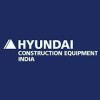Filter interviews by
VASANTHA TOOL CRAFTS Interview Questions and Answers
VASANTHA TOOL CRAFTS Interview Experiences
11 interviews found
(2 Questions)
- Q1. What is material management
- Ans.
Material management involves planning, organizing, and controlling the flow of materials from acquisition to consumption.
Involves procurement, storage, distribution, and disposal of materials
Focuses on optimizing inventory levels to meet demand while minimizing costs
Includes forecasting demand, monitoring stock levels, and ensuring timely delivery
Utilizes tools like inventory management software and supply chain manage...
- Q2. How to classified inventory.
- Ans.
Inventory can be classified based on various criteria such as value, usage, and storage location.
Classify based on value - ABC analysis (e.g. high value items as A, medium as B, low as C)
Classify based on usage - Fast-moving items, slow-moving items, obsolete items
Classify based on storage location - Raw materials, work in progress, finished goods
Interview Preparation Tips
I applied via Recruitment Consulltant and was interviewed in Dec 2022. There were 2 interview rounds.

(3 Questions)
- Q1. What do you know about injection moulding
- Ans.
Injection moulding is a manufacturing process used to produce parts by injecting molten material into a mould.
It is commonly used for mass production of plastic parts
The process involves melting plastic pellets and injecting them into a mould cavity
The mould is then cooled and the part is ejected
Injection moulding can produce complex shapes with high accuracy and repeatability
- Q2. How do you manage difficult team members
- Q3. Write a mail to customer communicating project delay
- Ans.
Email to customer regarding project delay
Start with a polite greeting and express regret for the delay
Explain the reason for the delay and provide a new estimated completion date
Assure the customer that you are taking necessary steps to minimize the delay
Offer any compensation or alternative solutions if possible
End the email with a sincere apology and thank the customer for their understanding
Interview Preparation Tips
I applied via Referral and was interviewed in Feb 2023. There were 3 interview rounds.

(1 Question)
- Q1. Concept of mould design
- Ans.
Mould design is the process of creating a tool or pattern that is used to shape and form a material into a specific shape or design.
Mould design involves creating a 3D model of the desired shape or design
The mould is then created using materials such as metal or plastic
The mould is used to shape the material into the desired form
Factors such as material type, shrinkage, and cooling time must be considered during the de...
(1 Question)
- Q1. 3d product design,3d extraction,2d plate drawing, free hand concept mould design
Interview Preparation Tips
I appeared for an interview before Apr 2024, where I was asked the following questions.
- Q1. What is your work profile
- Ans.
As an accountant, I manage financial records, ensure compliance, and provide insights for informed decision-making.
Prepare and maintain financial statements, such as balance sheets and income statements.
Conduct audits to ensure accuracy and compliance with regulations, e.g., GAAP.
Manage accounts payable and receivable, ensuring timely payments and collections.
Analyze financial data to identify trends and provide strate...
- Q2. What is your salary expectation
Interview Preparation Tips
I applied via Referral and was interviewed before Jul 2023. There was 1 interview round.
(5 Questions)
- Q1. About yourself and introduction about lat organisation it's scope
- Q2. Come to personal experience about your job and it's function
- Q3. As material management guy they have asked regd FIFO,LIFO, ABC ANALYSIS, VENDOR DEVELOPMENT AND ITS PROCESS
- Q4. Procurement function
- Q5. Material handling
Interview Preparation Tips
I appeared for an interview before May 2024, where I was asked the following questions.
- Q1. Past working experience, skills
- Q2. Programme writing,and g codes,m codes
I applied via Company Website and was interviewed in Nov 2021. There were 3 interview rounds.
Interview Questionnaire
3 Questions
- Q1. I am Bablu Kumar Yadav 5 years experience in CTM INDIA limited Chennai Motherson group of companies designation Tool room Engineer regarding for job
- Q2. Have any vacancy in your company?
- Q3. I am interested in this company joined
Interview Preparation Tips
I applied via Walk-in and was interviewed in May 2022. There was 1 interview round.
(1 Question)
- Q1. Creo Design Engineer die design
Interview Preparation Tips
I appeared for an interview in Feb 2021.
Interview Questionnaire
1 Question
- Q1. Why you left your previous company
Interview Preparation Tips
I applied via Campus Placement and was interviewed before Mar 2021. There were 2 interview rounds.
Just simple question of aptitude
(1 Question)
- Q1. Just simple mould related question
Interview Preparation Tips
- Mould theory and design
Top trending discussions






VASANTHA TOOL CRAFTS Interview FAQs
Tell us how to improve this page.
VASANTHA TOOL CRAFTS Interviews By Designations
- VASANTHA TOOL CRAFTS Accountant Interview Questions
- VASANTHA TOOL CRAFTS Project Engineer Interview Questions
- VASANTHA TOOL CRAFTS Industrial Trainee Interview Questions
- VASANTHA TOOL CRAFTS Production Supervisor Interview Questions
- VASANTHA TOOL CRAFTS Store Officer Interview Questions
- VASANTHA TOOL CRAFTS Operator Interview Questions
- VASANTHA TOOL CRAFTS Tool Room Engineer Interview Questions
- VASANTHA TOOL CRAFTS Creo Design Engineer Interview Questions
- Show more
Interview Questions for Popular Designations
Overall Interview Experience Rating
based on 9 interview experiences
Difficulty level
Duration
Interview Questions from Similar Companies
VASANTHA TOOL CRAFTS Reviews and Ratings
based on 150 reviews
Rating in categories
|
Tool Maker
35
salaries
| ₹1 L/yr - ₹4.5 L/yr |
|
Design Engineer
17
salaries
| ₹4.2 L/yr - ₹10.2 L/yr |
|
Junior Engineer
15
salaries
| ₹2.4 L/yr - ₹4.5 L/yr |
|
Assistant Engineer
14
salaries
| ₹2.9 L/yr - ₹6 L/yr |
|
Engineer
13
salaries
| ₹3.2 L/yr - ₹7.2 L/yr |

Gilbarco Veeder Root

Kirloskar Toyota Textile Machinery

Hyundai Construction Equipment

L&T–MHI Power Boilers
- Home >
- Interviews >
- VASANTHA TOOL CRAFTS Interview Questions














